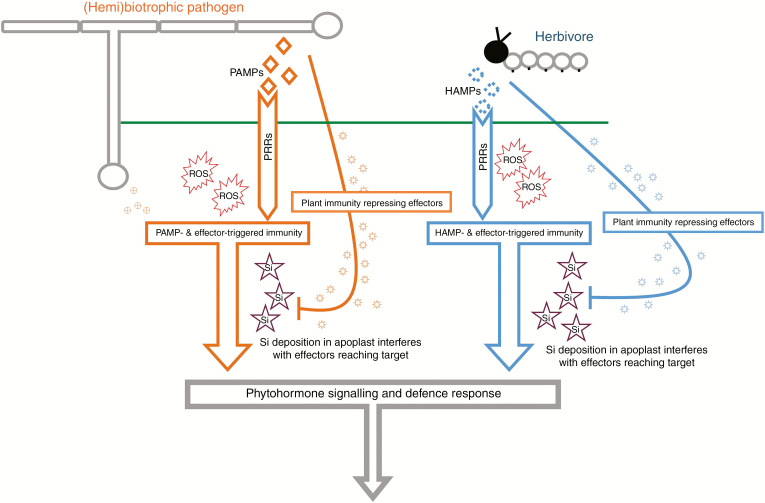Fig. 2.
Simplified summary of plant recognition of biotic stressors, (hemi)biotrophic pathogens and insect herbivores, and the subsequent cascade of events leading to plant-induced defence response. Pathogen- and herbivore-associated molecular patterns (PAMPs and HAMPs) are recognized by pattern recognition receptors (PRRs). Reactive oxygen species (ROS) are generated upon recognition of PAMPs and HAMPs. Recognition of PAMPs and HAMPs, in conjunction with recognition of other endogenous pathogen/herbivore-produced effectors, leads to PAMP/HAMP-triggered immunity and effector-triggered immunity (ETI), which induces phytohormone signalling to produce an induced plant defence response. (Hemi)biotrophic pathogens and insects can produce effectors that suppress ETI, inhibiting the plant defence response. Deposition of Si in the apoplast potentially interferes with immunity-repressing effectors reaching their target sites, thereby allowing the plant to mount an induced defence response to combat the biotic threat (Vivancos et al., 2015).

